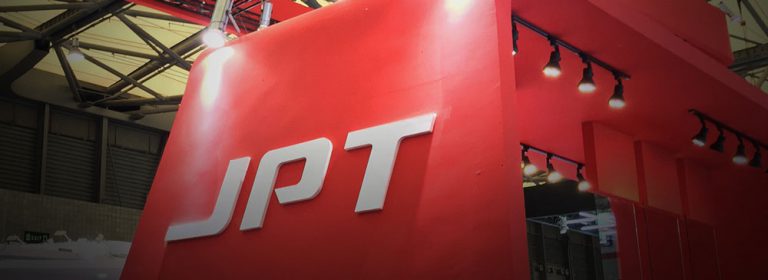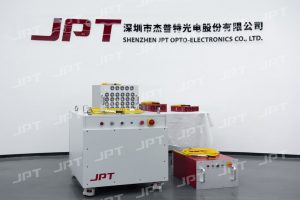Table of Contents
Laser engraving or laser marking on products of plastic is a method by which the components are marked or labeled with the help of a laser. Polymers of which different plastic elements are made determining the process used, laser marking plastic settings, and the quantity of energy required to perform the laser engraving for the plastic. The outcome of the laser engraving usually depends upon the kind of additive like dyes, the plastic used, and the kind of laser used.

What kind of machines engraves plastic?
The results of plastic engraving are influenced by the type and the wavelength of the laser used. The wavelength varies according to the requirement.
- Solid-state beam lasers with a doubled frequency of 532nm
- Solid-state beam lasers with a tripled frequency of 355nm
- Infrared sources- Nd YAG and Fiber lasers
- CO2 lasers
The technology behind laser marking plastics
Laser engraving is a kind of optical process where the plastic elements absorb laser beams without even coming into any contact. This kind of behavior is widely or hugely exploited also in the process of laser welding as well as laser cutting. It is a method by which one kind of material can absorb a beam of the laser so that it will be melted or cut, while other materials allow transparency to the beam of the laser where they can go in and out entirely without any impact.
Different varieties of thermoplastics and plastics can be engraved with a laser. If we cannot laser mark any plastic then, it is usually processed with the help of a master batch or an additive suitable for engraving of laser on plastic.
Masterbatch typically means a mixture of concentrated additives or pigments encapsulated in resin support while the thermal process is ongoing. It is later cooled and fragmented into a form of granules. Additives like color pigments also affect the laser engraving or marking ability.
If the plastic has low thermal conduct that means the loss of energy during laser engraving is low, thus processing becomes very fast. The plastic’s macromolecular structure absorbs the laser beams generally in the range between infrared and ultraviolet.
What are the advantages of laser engraving on plastic?
- The engraving is waterproof, permanent, chemical, light, heat, and wear-resistant.
- The process of laser engraving is an extremely high quality, forgery-proof, and effective process.
- It is perfect for areas that are difficult to access thus it is very flexible.
- The whole laser marking process is non-contact.
- No extra costs for inks, chemicals, etc., and tool wear are required.
- It provides uniform results and guarantees consistency as the processed plastic is free from tensions, fixings, and pressures.
- No post-processing or pre-treatment is required thus making it a very simple process.
- Small batches of polymer can be engraved economically due to the laser machine’s shot setup time.
4 Types of results during plastic laser engraving
Based on marking results of molecular reorganization, or color variation, on the material surface, plastic laser engraving can be divided into four types: Plastic carbonization, Foaming, Laser ablation or laser removal, Color change
1. Plastic carbonization
This method provides strong contrasts of color on bright exteriors or surfaces and it can be applied to biopolymers and polymers. During the process, the plastic surface is heated up and carbonization by the laser to release hydrogen and oxygen. Due to the carbon concentration, the surface of the material is carbonized. This process takes a longer time for marking than the other techniques.
2. Foaming
This technique not only leaves a mark on the surface of the polymers but also on a few metals. The laser’s heat helps in melting the polymer surface. Later, because of the fast cooling, the material has encapsulated bubbles in them that can be felt by hand touch. It forms an elevated positive sign (plus) which can vary from light to dark depending on the polymer material. In such cases, the laser works at a low level of power with longer positive signs.
3. Laser ablation or laser removal
Laser removal is performed with laminates (multilayered plastics). During the process of removal, the beam of the laser helps in removing the top thin layers (base material) like layers of paints. This will create an effect of contrasting colors due to the variation of different layers.
4. Colar change
It is an electrical process where the destruction or reorder of pigmented macromolecules occurs. It also promises maximum readability. The surface is unaltered and smooth, and no polymer is removed, but there is a possibility of foaming. The variation of color can be both dark and light but, in most parts it is a dark tone.
How to operate for better plastic laser marking results?
1. Choosing the types of plastics suitable for laser marking
Many kinds of transparent or translucent plastics can leave no marks with the laser beam passing through. There are also many plastic samples that will not produce any change after processing without any additives.
However, polycarbonate (PC) and polyvinyl chloride (PVC) are exceptional, as they can be carbonized for clear marks under irradiation with extremely low energy even as they are transparent.
2. Using additives and modified plastics
As additives can somewhat increase polymer‘s absorption of laser energy, modified plastics have specific capabilities after being mixed or filled with additives. Some plastics are suitable for dark-marking modification and some for light-marking, and some others for both.
3. Adjusting the settings of laser engraving machine
There are several lasers available in the market, namely UV laser (355nm), green laser, and infrared laser. The infrared laser is divided into near-infrared (such as 1064nm YAG laser, fiber laser) and far-infrared (such as 10640nm CO2 laser). With the development of science and technology, some parameters of infrared lasers can be flexibly controlled and adjusted to achieve the same effect as the short-wavelength UV lasers on certain materials. The following are the main factors that will impact the result of plastic laser engraving.
1) Pulse width
Pulse width, known as the laser pulse width, is a measure of the time that a laser beam acts on the surface of a material. For plastics, it is critical for the duration of laser lighting on the surface: if too short, there will not be enough energy to react, only leaving very light-colored, blistering markings; if too long, there will be consequences of severe carbonization, ablation and cracking. Hence, the proper pulse width is essential to make appropriate changes on the plastic surface and get the desired effect. The pulse width has been a very important reference to determine whether a laser can be applied.
2) Frequency
Frequency, also known as laser repetition frequency, measures how many laser beams are emitted per second. Usually, the laser frequency corresponds to the speed of laser scanning. However, the higher the frequency also means the shorter the interval between each beam. As plastic is a poor conductor of heat, whose heat dissipation is usually less than satisfactory, excessive frequency will result in heat accumulation. This is unintended because the heat will cause not only “thermal damage” around the material and media but also bubbles, melting and solidification, and ablation sinking in places that should not be engraved. Therefore, it is essential to choose the appropriate frequency based on the material’s melting point so as to achieve desired effect and efficiency. A wide frequency adjustment range will bring more possibilities for plastic marking.
3) Beam Propagation Ratio
The M² factor, also called beam propagation ratio, is a common measure of the beam quality of a laser beam. It is the quality ratio of the actual beam emitted by the laser to the theoretical beam. The closer the ratio is to 1, the better, while the larger the value, the worse the beam quality will be. The beam propagation ratio directly impacts the energy distribution after focusing. An excellent beam propagation ratio allows the laser to be concentrated and uniform after focusing, while a poor one results in a large and diffuse focus. The poorer the M² is, the less heat energy is effectively available, and the excess heat energy will lead to “heat-affected areas” in the plastic marking that we don’t want, making the results even worse.
4) Peak power
Laser peak power refers to the maximum power that can be achieved instantaneously by a beam of laser. The higher the peak power, the more laser energy is effectively available, and the less waste heat is generated accordingly, which can vaporize or carbonize the material without deformation and melting. The mechanism is somewhat similar to that of beam quality.
4. Using an ideal laser engraving machine
1) MOPA Fiber Laser
It stands for Master Oscillator Power amplifier and it shows great temporal pulse control shaping and high-level laser performance. In MOPA configuration, the pulse width and pulse frequency can be independently controlled.
JPT develops the M7 and M8 MOPA fiber laser series that show excellent advantages to the essential plastic engraving factors we mentioned above. These laser machines can achieve 2-500ns pulse width and therefore can adapt to some plastics; With an adjustable laser frequency of 1kHz to 4000kHz, your plastic marking process can be done with high efficiency; The beam propagation ratio of JPT MOPA fiber lasers is no more than 1.3, which result in an outstanding performance with plastic engraving.
2) UV Laser
It has a smart electronic design and dual compact layers cavity that easily adapts to an industrial environment. These have a minimum pulse duration of 6ps. All these features are embedded in the JPT PS laser machine series.
Recommend Reading

You Will Never Believe Laser Technology Could be So Useful
Table of Contents Beginning: The Development and Current Status of the Laser Industry The laser industry has found wide acceptance across different industries since the

How to Choose a Suitable Laser Source – MOPA Series
As a tool, the laser has become a new favorite in the industrial age. Compared with other traditional processing methods, the laser has only a





